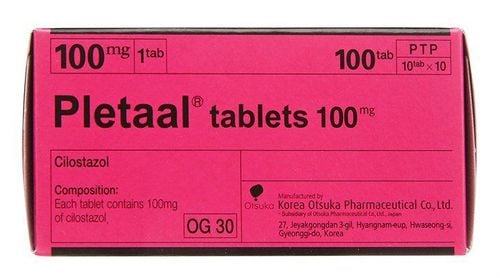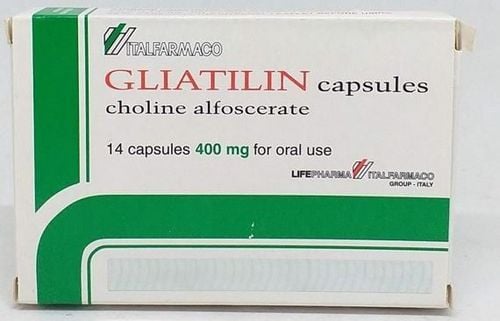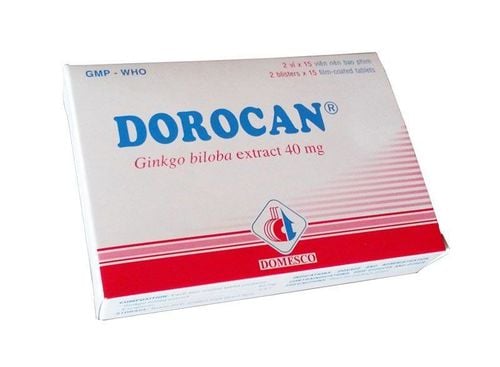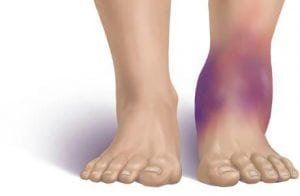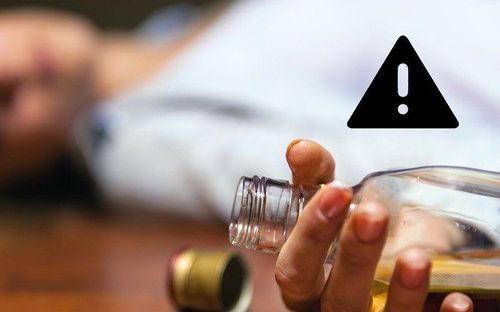This is an automatically translated article.
The article was professionally consulted by Specialist Doctor I Huynh Kim Long - Emergency Resuscitation Doctor - Emergency Resuscitation Department - Vinmec Da Nang International General Hospital. Dr. Huynh Kim Long has extensive experience in the treatment of Resuscitation - Emergency and Acute Stroke in adults.Compression syndrome with compression mechanism due to fracture trauma or some other cause is a problem that needs to be solved early when detected. If not handled promptly, the patient will be at risk of many serious complications such as necrosis, irreversible damage, and amputation.
1. What is compartment syndrome?
In the body, closed compartments run along a limb such as an arm, a leg...with a normal pressure in the cavity between 0-5 mmHg. However, due to certain reasons, increased soft tissue pressure in the hard compartment will cause compartment syndrome, causing decreased blood circulation through the cavity leading to ischemia.Compression syndrome includes both acute and chronic forms. In which, acute compartment compression occurs rapidly, causing damage to muscles, blood vessels and nervous system. Chronic compartment compression is less common, usually occurs in people with frequent and continuous activities in the forearm, foot...
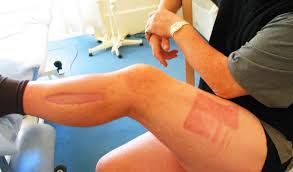
2. Causes of compartment syndrome
The cause of the formation of compartment syndrome is mainly due to accidents such as traffic accidents, labor accidents, daily life accidents leading to fractures, vascular injuries, software... among them Fractures causing compartment syndrome accounted for 45%.Besides the causes caused by accidents, the following are some other causes that also cause compartment syndrome:
Patients after surgery to combine bones People using anticoagulants, calcium injections Patients with disorders Blood clotting Obese patients, elderly people, patients with atherosclerosis The patient does not cooperate when applying pressure or the doctor makes an error in the process of applying compression and compression techniques. Complications of tissue necrosis edema due to snakebite or burns.

3. How does the cavity compression mechanism take place?
According to medical studies, the mechanism of compartment compression occurs as follows:Pathological vortex: Volume growth of components in a closed cavity due to blood flow from the fracture into the cavity, displacement of the cavity. Bone head fracture or tissue edema due to many different causes cause pressure in the cavity and impact back to compress the organizations in that space that have nerve blood vessels.
The increase in compartment pressure will lead to venous compression, then cause venous stasis in the periphery and cause increased dialysis fluid out of the vessel wall, increasing the pressure in the cavity leading to arterial compression. The artery is compressed, preventing blood from reaching the extremities, causing acute ischemia, causing tissue necrosis or limb necrosis.

4. Diagnosis of compartment syndrome
The sooner the patient is diagnosed with compartment syndrome, the more favorable the treatment of this syndrome with high recovery efficiency. Usually, the diagnosis of compartment syndrome is made through physical examination. For patients with compression of the cavity not due to an accident, the patient will have symptoms such as: Pain and increasing pain. When palpating, the skin feels hard and tight in the pinched cavity. In addition to pain, the patient feels numb, has decreased sensation, or has a movement disorder. In the case of patients with compartment compression due to fracture or trauma, the time to occur compression is usually after 2-6 hours. This is also a golden time for diagnosis and treatment of this syndrome.Although most of the time, just through clinical examination, doctors can diagnose compartment syndrome, but in some cases, clinical signs cannot be exploited such as: The patient is comatose If the patient is a child, the doctor will measure the pressure in the cavity to confirm the diagnosis. In case the pressure index is less than 30 mmHg, the patient can recover on their own and does not need treatment, if the reading is greater than or equal to 30 mmHg, it is considered as conservative treatment threshold and needs decompression surgery.

5. Treatment of compartment syndrome
The compartment syndrome occurs with a threatening nature and lasts no more than 6 hours, then proceed with conservative treatment in the following ways:Eliminate the causes of compression such as dressing too tight, removing sutures skin tight... The doctor prescribes the use of pain relievers. Monitor the progress of cavity compression continuously hour by hour, if the progress is not good, then have the next treatment plan. In case the compartment syndrome occurs from 6-15 hours, it is necessary to perform surgery immediately by incision and vascularization to release the compression, and at the same time remove dead tissue to avoid infection
If the patient's cavity compression occurs for more than 15 hours, Doctors need to consider between decompression surgery and amputation because if performing decompression surgery, there will be many dangerous complications for the patient such as heart failure, kidney failure anuria...
Please dial HOTLINE for more information or register for an appointment HERE. Download MyVinmec app to make appointments faster and to manage your bookings easily.





